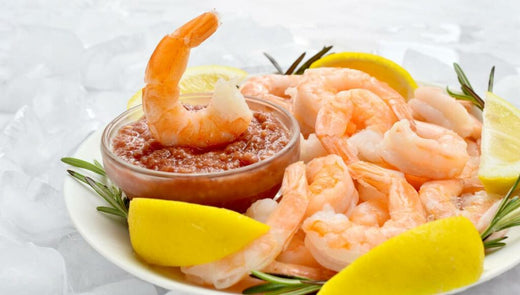Hey there! At Chef’s Detective, we know how frustrating it can be to deal with that weird, slippery coating on store-bought shrimp Let me share our tested methods for removing sodium tripolyphosphate (STPP) from your shrimp so you can enjoy their natural taste and texture.
Quick Answer
The most effective way to reduce STPP in shrimp is thorough rinsing under cold running water for 5-10 minutes. While you can’t remove it completely, proper rinsing significantly reduces the chemical’s presence and improves taste and texture.
What’s That Slimy Stuff Anyway?
Before we dive into removal methods, let’s understand what we’re dealing with. STPP is a preservative that seafood processors use to
- Keep shrimp moist during processing
- Make them look plumper
- Extend shelf life
The downside? It makes shrimp
- Feel unnaturally slippery
- Taste less sweet and fresh
- Shrink a lot during cooking
- Cost more (you’re paying for added water weight!)
4 Ways to Remove STPP from Shrimp
1. Cold Water Rinse Method (Most Recommended)
This is our go-to method at Chef’s Detective because it’s simple and effective.
Steps:
- Place shrimp in a colander
- Run cold water over them for 5-10 minutes
- Gently agitate while rinsing
- Continue until water runs clear
2. Cold Water Soaking Method
Steps:
- Fill a bowl with ice-cold water
- Submerge shrimp completely
- Change water every 15 minutes
- Total soak time: 30-45 minutes
3. Defrosting Method
If you’re starting with frozen shrimp:
- Place frozen shrimp in cold water
- Add ice to keep water temperature low
- Let thaw completely
- Drain and rinse individually
4. Brining Method (Limited Effect)
Recipe:
- 1 tablespoon salt per cup of water
- Soak for 15-30 minutes
- Rinse thoroughly afterward
Note: While brining won’t remove much STPP, it can help improve texture and flavor.
Smart Shopping Tips
The best defense? Don’t buy STPP-treated shrimp in the first place! Here’s what to look for:
Label Check List:
- “Untreated”
- “Chemical-free”
- “No phosphates added”
- Ingredient list (avoid if STPP is listed)
Visual Inspection:
- Good: Firm texture, clean briny smell
- Bad: Slimy coating, overly glossy, ammonia smell
Common Questions We Get
Q: Can cooking remove STPP?
A: Nope! Heat actually makes shrimp release more water, showing how much STPP was there.
Q: Does lemon juice or vinegar help?
A: Not really. While they might improve flavor, acids don’t significantly remove STPP.
Q: Is wild-caught better?
A: Usually! Wild-caught shrimp are less likely to contain STPP, but always check labels.
Pro Tips from Our Kitchen
-
Temperature Matters: Always use cold water – warm water can start cooking the shrimp.
-
Time Management: Plan ahead for soaking methods, especially if preparing for dinner.
-
Storage: After treatment, store properly:
- Refrigerate immediately
- Use within 2 days
- Keep at 40°F or below
When to Skip Treatment
Sometimes, you might want to skip STPP removal if:
- You’re really short on time
- The shrimp will be heavily seasoned
- You’re using them in a strongly flavored dish
The Bottom Line
While completely removing STPP from shrimp is tough, we can significantly reduce it. At Chef’s Detective, we’ve found the cold water rinse method to be the most practical for home cooks. Remember, the best approach is prevention – choose your shrimp wisely at the store!
Our Final Thoughts
We always say – a little effort in preparation makes a huge difference in your final dish. Taking time to properly clean your shrimp will reward you with better texture, taste, and overall eating experience. Happy cooking!
Have you tried any of these methods? We’d love to hear about your experiences in the comments below!
Would you like me to explain or break down any part of this article in more detail?

Defrost Shrimp in Cold Water
While defrosting the frozen shrimp, put it in ice-cold water. You can keep ice underneath the cool water to ensure that it remains cold. Once the shrimp has thawed, drain the water, and give a final wash to each shrimp. You can now use it in your meals without worrying about the amount of sodium tripolyphosphate.
This method works because the water’s low temperature makes it easy to drain the sodium polyphosphate from the shrimp.
4 Ways To Remove Sodium Tripolyphosphate From Shrimp
It doesn’t matter if you bought shrimp from a store and it says “ready to cook” on the packaging. You should clean it regardless. Rinsing the shrimp helps wash off some amount of the preservatives from it.
Wash each shrimp individually for 5-10 seconds under a stream of cold water. Do not use warm water because this sensitive crustacean overcooks easily and develops a rubbery texture. The brine and sodium tripolyphosphate in the shrimp will wash away with the cold water. The same doesn’t happen if you cook the shrimp directly.
